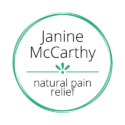How to relieve jaw pain and save your teeth
Do you suffer from jaw pain or clench your teeth while sleeping? Learn to prevent it and save your teeth.
I went to see my dentist recently. We (well, mostly she, because my mouth was occupied) chatted while she worked. I learned that the no.1 thing she did in 2020 was make mouth guards for her patients. The aim was to relieve jaw pain and help them stop grinding their teeth. She believed that the extra stress her patients were experiencing from COVID-19 was creating the increased jaw tension and pain they were reported.
I remembered when I used to clench my teeth during sleep, at a stressful time in my life. Happily I was able to stop it and save my teeth by using some simple Ortho-Bionomy techniques to reduce the tension and pain.
In case this helps you or someone you know, here’s how to do it:
General muscle tension release:
When you hold a lot of tension in your jaw it often feels really tight and possibly sore in the strong chewing muscles at either side of your face. These extend from your cheekbones just below your eyes down to the jaw bone below your lower teeth. It might also hurt around your jaw joints just in front of your ears.
To give these muscles a rest, first place your palms on your cheeks with fingers pointing upwards along the sides of your head. Support your jaw bone with the base of your palms and press very gently upwards to allow your cheeks to soften under your hands. Close your eyes and breathe slowly for a minute or more (this is a good stress-reliever too). Then try the steps below:
3-Step Release for Jaw Joint:
- First, hold your lower jaw bone lightly with your fingertips on both sides of your chin. Move your jaw slightly (using your fingertips) to one side and then the other, noting which side feels better, moves more easily or feels more comfortable. Then move it to the side that felt better and hold it there for 5-10 seconds before allowing it to return to a neutral position.
- Next, with your fingertips lightly on your jaw bone again, this time slide it slightly forwards (as if jutting your chin out), then back (towards your neck), again noting which feels better. Hold it gently in that preferred position for 5-10 seconds before letting it return to neutral.
- Now use your fingertips on the sides of your jaw bone to guide your mouth open a little way, then guide it closed, noting which felt better. Then hold it gently in that easier or better position for 5-10 seconds.
Be gentle!
Your jaw muscles are super strong and work really hard. Plus we often hold tension there when we’re stressed, angry or tired. So it’s really important to work gently here – if you push too hard in the movements shown above, it can just overwork these muscles even more. If you go gently and breathe slowly, you’ll notice your whole body relaxing.
Use these as often as you like. They’re especially useful first thing in the morning if you wake with jaw pain or tension, and again before you go to sleep at night to reduce the build-up of tension. You can also reduce jaw tension by releasing neck tension – I’ll be covering this in an upcoming newsletter and blog post.
*****************
Did this help you? Let me know in the comments below.
Image credit: Houcine Nib – Unsplash

